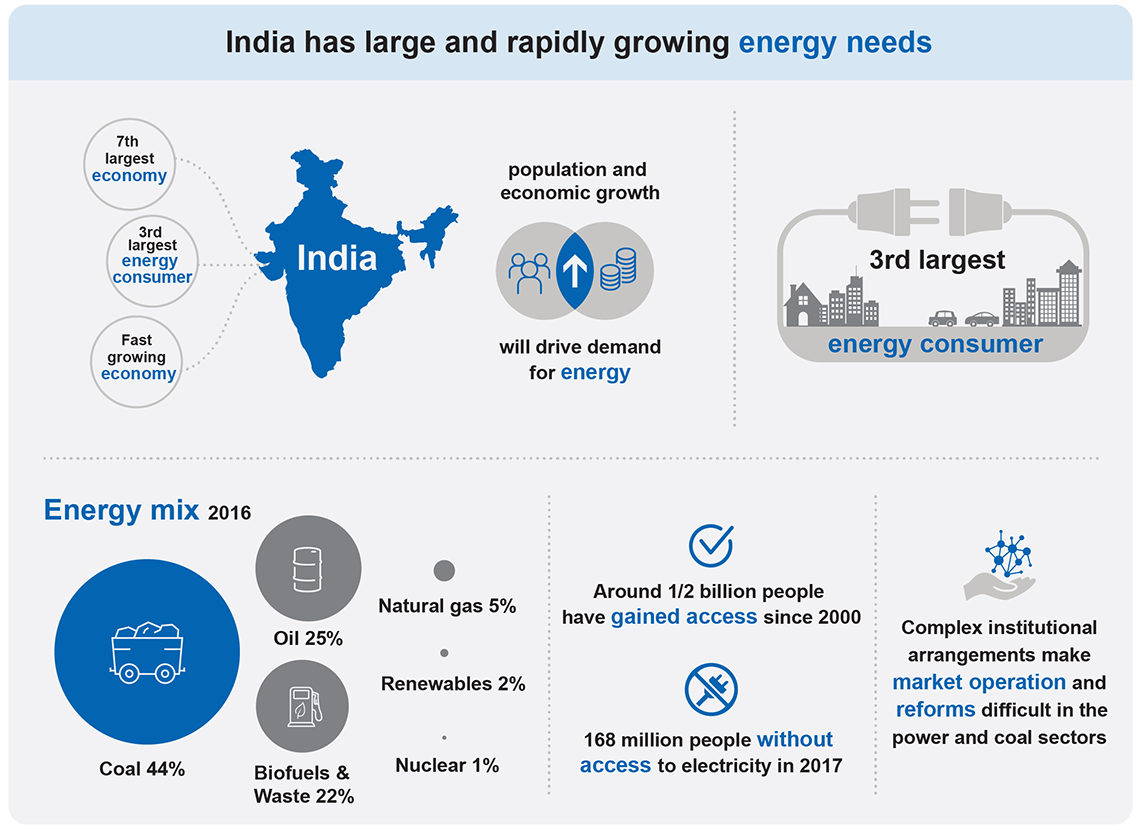Biodiversity & Environment
Necessity of Coal Based Energy
- 18 Sep 2020
- 7 min read
This editorial is based on “Reject this inequitable climate proposal” which was published in The Hindu on 18/09//2020. It talks about the importance of coal energy over renewable energy for India.
Recently, the UN Secretary General highlighting the importance of Paris accord & meeting its target had called India to give up coal immediately and reduce emissions by 45% by 2030.
Although India is one of the few countries with at least 2° Celsius warming compliant climate action plan, the above said proposal is not in compliance with foundational principle of the UNFCCC i.e. Common but differentiated responsibilities (CBDR).
CBDR distinguishes sharply between the responsibilities and commitments of developed countries vis-à-vis those of developing countries. If India makes no new investment in coal after 2020, it would possibly de-industrialise the country and lead to a low-development trap.
Therefore, India while adhering to the principles of balance between development and environment, must actively engage with developed countries to achieve the target of Paris Accord.
GHG Emissions in India vis-a-vis World
- India has the one of lowest per capita GHG emission among the G-20 countries.
- Despite the accelerated economic growth of recent decades India’s annual emissions, at 0.5 tonnes per capita. These are well below the global average of 1.3 tonnes.
- Also, those of China, the United States and the European Union (EU), the three leading emitters in absolute terms, whose per capita emissions are higher than global average.
- In terms of cumulative emissions, India’s contribution by 2017 was only 4% for a population of 1.3 billion, whereas the European Union, with a population of only 448 million, was responsible for 20%.
- This highlights the fact that the global North has continued dependence on fossil fuels.
- The UNFCCC itself has reported that between 1990 and 2017, the developed nations (excluding Russia and east Europe) have reduced their annual emissions by only 1.3%.
- Moreover, the U.S. one of the leading producers of GHG has withdrawn from the Paris Agreement.
Coal vs Renewable Energy
- India still a Developing Country: Unlike developed countries, India (given it's development obligations) cannot substitute coal and other fossil fuels substantially with renewable energy.
- Given lack of production capacity in renewable energy technologies and their large- scale operation, shutting coal based energy and replacing it with renewables will expose India to increasing imports of renewable technology equipment and dependence on external sources and supply chains.
- No Overnight Transition to Renewable Energy: With India on course for a 285% increase in electricity generation by 2050, traditional energy sources will prove crucial.
- Renewables alone will not be able to meet those needs.
- The near-term future of renewable energy requires that alternative power sources are integrated into dynamic grids alongside fossil fuels.
- Further, manufacturing growth powered by fossil fuel-based energy is itself a necessity, both technological and economic, for the transition to renewables.
- Fossil-Fueled Energy Requirement for Manufacturing: As the manufacturing industry requires uninterrupted supply of power, renewable energy doesn't really drive manufacturing industry. Power supply from renewable energy cannot be switched on and off like a fossil-fuel power plant.
- Thus, renewables are not always reliable and cannot consistently cover baseload power supply, especially during times of peak demand.
- This reinforces the need for traditional energy sources including coal that can provide power when renewables fail to meet demand.
- Coal is the Base of Power Supply in India: Even though roughly 2 GW of coal-based generation is being decommissioned per year, coal is the dominant source of electricity in India.
- It currently accounts for nearly 2/3rd of power supply, the bulk of which is processed in thermal power plants.
- The 2019 report published by the Central Electric Authority predicts that coal will still account for around half of India's power generation in 2030 and remain crucial beyond then.
Way Forward
- Making Coal Energy More Environmentally Compatible: Instead of abrupt transition to renewable energy, a range of new technologies (like Coal gasification, Coal beneficiation, etc.) can be deployed to make coal-fired power plants more environmentally compatible.
- This will dramatically reduce the harmful environmental impacts of burning coal.
- Engaging With Developed Countries: Since the Copenhagen Accord 2009, signalled the end of legally binding commitments to emissions reduction by the developed countries, technology development in climate change mitigation technologies has registered a significant fall.
- Thus, India can actively engage with developed countries to mobilise funds and technology for Climate mitigation and adaptation.
- In this pursuit, India can actively collaborate with European Union (EU) which envisages to achieve “carbon neutrality” by 2050 under a green climate deal.
Conclusion
India is on the fast track to sustainability. According to the Central Electric Authority, renewable sources will generate half of the country's power by 2030, with wind and solar accounting for the lion's share. Yet to make that transition smooth and realize its long-term vision of a carbon-free energy future, the country will have to complement renewables with traditional sources.
|
Drishti Mains Question In order to realize the long-term vision of a carbon-free energy future, the country will have to complement renewables with traditional sources. Discuss. |
This editorial is based on “New order in West Asia: On Abraham Accords” which was published in The HIndu on September 17th, 2020. Now watch this on our Youtube channel.







